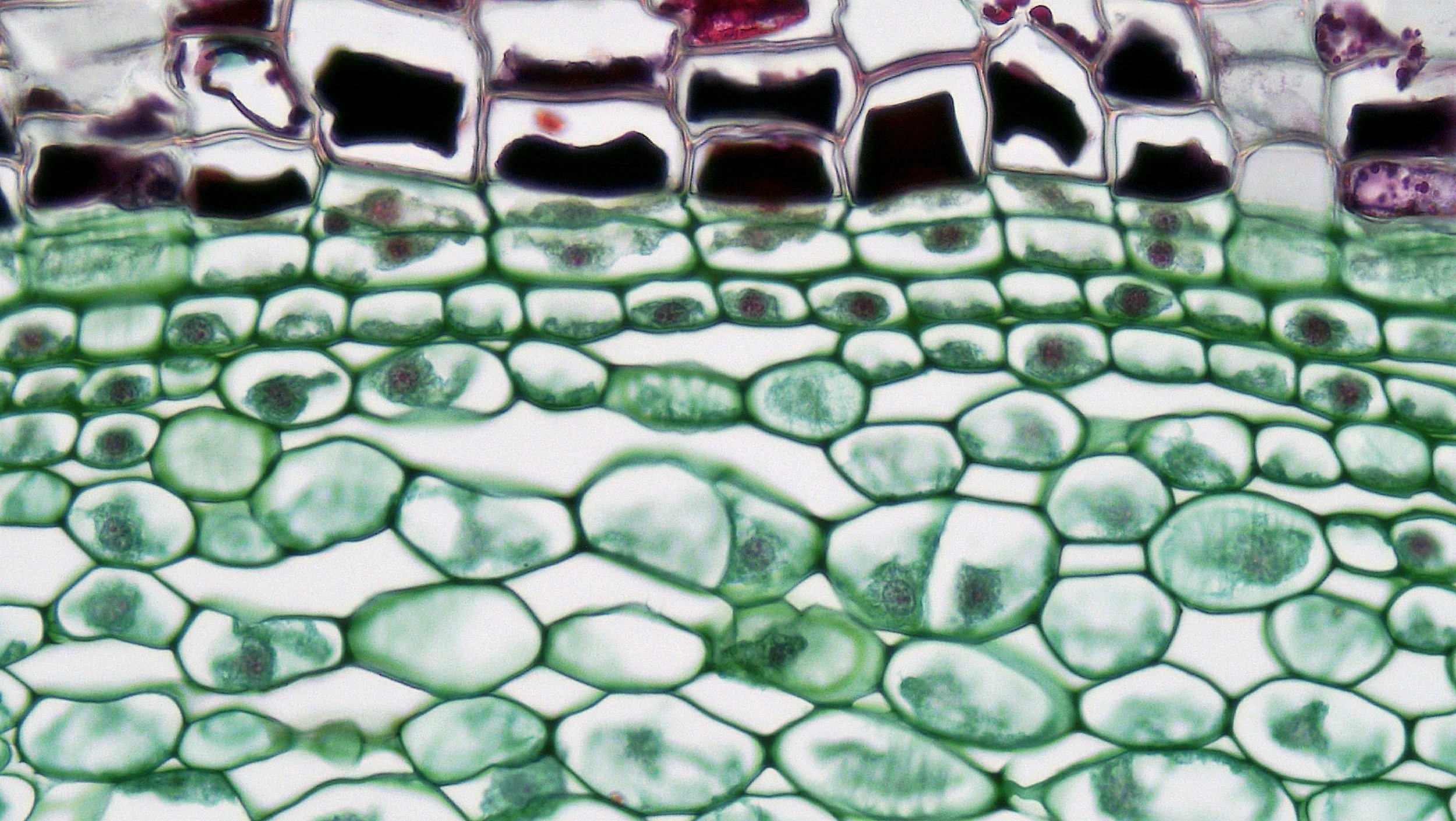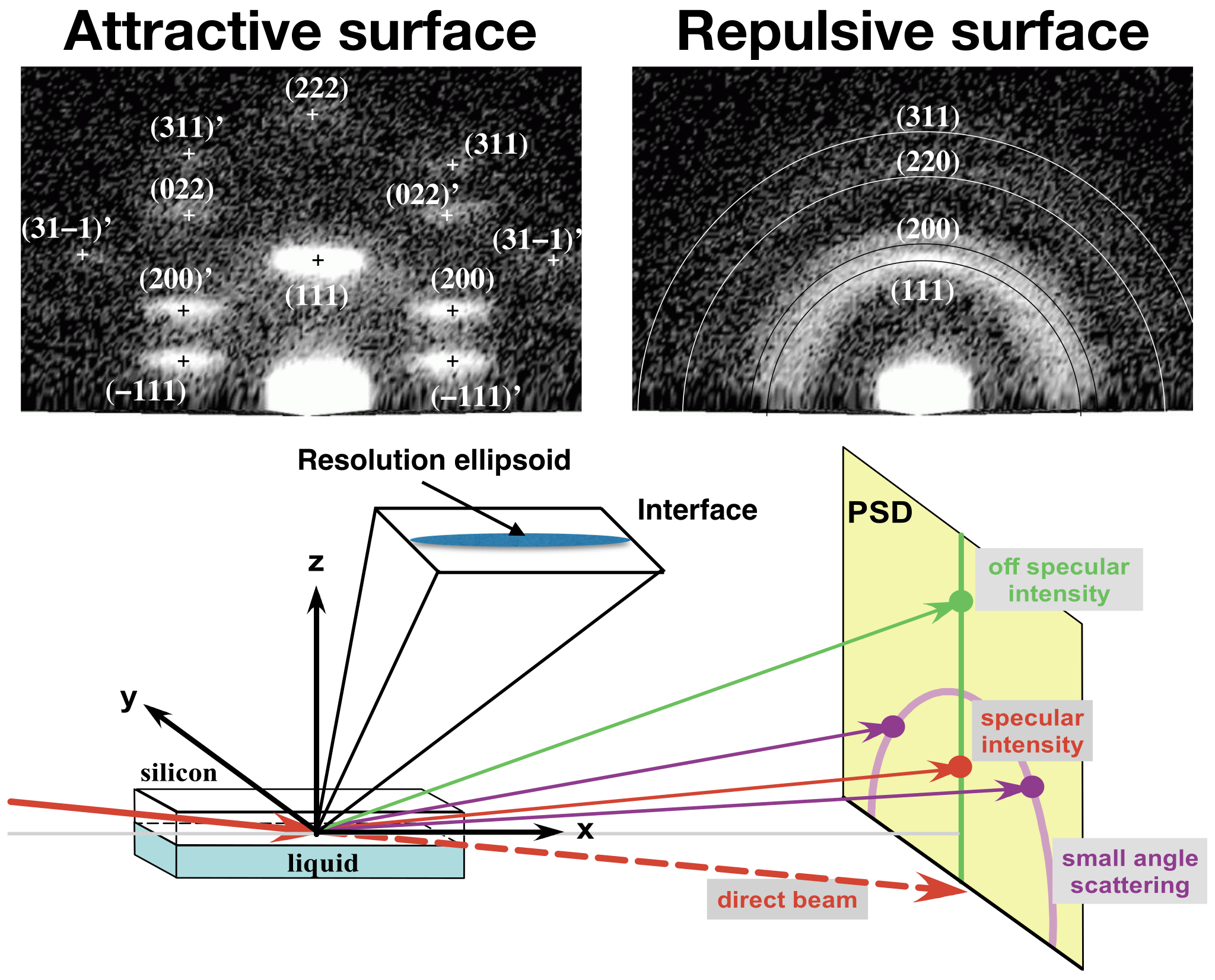Exploring the interfaces
An image with a relevant example
Modern technology continuously requires the development of new materials, where the knowledge and control of interface structure and properties becomes increasingly important. For many processes, it is precisely at the interfaces that things are happening. A striking example are the processes that control life itself, from cellular interactions to the whole organism.
Why here and now?
Sweden is one of the leading countries in surface science in a broad sense from condensed matter and hard materials, through soft matter to life science. Furthermore, the European Spallation Source has identified a capability gap in the area.
Building it
This project will deliver a competitive instrument proposal for a dedicated grazing-incidence small-angle scattering (GISANS) beamline, named SAGA (Surface Analysis using Grazing Angle neutron scattering), which may be constructed as one of the next suite of ESS instruments 16-22.
The GISANS method and its applications
GISANS is an experimental technique for studying nano structures at surfaces and interfaces of thin films as well as multilayers and buried systems. Surface and interface science has advanced enormously over the last decades and Sweden has continuously been one of the strong nations in this area, due to the development of a series of experimental methods.
One of the best examples is photoelectron spectroscopy that was invented in Sweden and has been one of the biggest breakthroughs for surface science. Furthermore, advances on atomic force and electron microscopes allowed access to previously unknown territories. The understanding of interfacial properties of materials, as well as interfacial processes in terms of structural, morphological and compositional changes, is of crucial importance in many scientific fields that include chemistry, physics, biology, medicine and engineering.
Neutrons offer unique opportunities in this context, as their high penetration power allows to study buried interfaces. In addition, the nuclear interaction enables isotope contrast variation experiments and makes the neutron sensitive to light elements, like hydrogen, as well as the neutrons spin enables a direct measurement of magnetic induction.
Typically, GISANS experiments have piggybacked on experiemental stations that are performed either on SANS instruments or on reflectometers, which are both not ideally suited for GISANS measurements. Reflectometers use a line focus (relaxed divergence in the plane of the sample) hindering high-resolution SANS measurements. SANS instruments on the other hand are not set up to collect specular reflectivity, which is required for the analysis of grazing incidence data.
The only dedicated instrument for GISANS in the world is REFSANS at the Maier Leibnitz Center in Garching (Germany), but this is limited by the flux available at that facility. The advent of the ESS, however, blows away any such limitations.
GISANS relies on enhanced scattering at grazing incidence to form a picture of a sample via the distribution and intensity of scattered neutrons as a function of momentum.
The SAGA design will take advantage of and pay full considerations to:
Time-of-flight GISANS
High neutron flux
Low background noise
Flexible and spacious sample area
Horizontal surfaces, polarisation or magnetic fields
Wide-angle and off-specular detectors
Variable resolution
Reflectivity measurements
The conceptual design phase for SAGA will include several innovative designs building on existing instruments. The technical concepts to be evaluated include:
Incident beam optics
Focusing in momentum
Beam multiplexing
Larmor precession
Data processing and modelling
Examples
Micellar self assembly
The GISANS method allows to resolve the structure of materials at interfaces in three dimensions (for an introduction see, e.g. M. Wolff: Grazing incidence scattering, EPJ Web of Conferences 188, 04002 (2018)). The scattering geometry is shown in the lower panel. A particular strength of neutrons is their large penetration for many materials and the ability to study solid-liquid interfaces. A neutron beam enters a thick silicon wafer from the side and gets scattered at the liquid interface (typically deuterated). The upper panel shows an example of the influence of surface energy on the self assembly of polymer micelles (balls of polymer). In bulk the micelles form a face centred cubic structure. The two scattering patterns clearly show, that this cubic structure develops strong texture (cubic dense packing) at an attractive interface, while a powder like structure is formed at a repulsive one (M. Wolff et al., Phys. Rev. Lett., 92, 255501 (2004)).
The structure of model biological membranes with GISANS
Contact: Marité Cárdenas, Malmo University and Biofisika Institute, Leioa, Spain
A recently developed nanoparticle coating scaffold enables the formation of coexisting flat and curved model biological membranes. These scaffolds partially retain a high order and give a resonator effect, enhancing the GISANS signal (A. Vorobiev et al., Sci Rep 11, 17786 (2021)). The combination of surface neutron scattering techniques (GISANS and reflectrometry) with microscopy ensure the multiscale characterization of the structure and properties of model biological membranes. Now questions such as molecular partitioning (phase separation) due to curvature or local structure on curved bilayers can be answered (N. Paracini et al., ACS Appl. Mater. Interfaces, 15, 3772–3780 (2023)).
Timing and implementation
Work Package 1
Conceptual design
The scientific and business case of a surface scattering beamline will need to be translated into technical specifications, which define the overall performance requirements of SAGA. On this basis we will develop the concept of the beamline, defining the key instrument parameters, length, neutron delivery system, detector and modes of operation, and include an analysis of any novel optical designs and new technologies. The concept will be refined and benchmarked in ray-tracing simulations.
WP1 Objective
Based on the scientific and business case of a surface scattering beamline develop the concept of the beamline.
WP1 Tasks
Task 1.1: Update of and further refine the science and business case for SAGA. This will be based on the wealth of material collected by the Swedish GISANS community.
Task 1.2: Translation of the scientific requirements into technical specifications. Determining what is required by the Swedish and international research community.
Task 1.3: Defining the basic concept of the instrument with the help of ray tracing simulations. This will provide the basis for the technical design in WP2.
Task 1.4: Perform a feasibility study into novel technical developments and innovative optics designs. This will identify which developments are worth further verification.
WP1 Deliverables
Deliverable 1.1: Report on the scientific and business case for SAGA
Deliverable 1.2: Definition of the overall performance requirements of SAGA to provide the basis of the technical design in WP2.
Deliverable 1.3: Report on the feasibility of technical developments and novel design concepts.
Work Package 2
Technical design
The specification and preliminary outline of the instrument in WP1 will set the baseline for the technical design work package, WP2. This will also include tests of specification and performance test and benefit from the technical development initiated thanks to the build-up of ESS and MAX IV.
WP2 Objective
To provide the technical design including dimensions and components as well as detailed simulations of the expected performance of the beamline.
WP2 Tasks
Task 2.1: Detailed simulations of the expected performance of the beamline. This will be based on conceptual design in WP2.
Task 2.2: Detailed proof-of-concept demonstrations, including prototype testing, for the most promising technical developments from WP1. This will provide the evidence to support the use of these concepts in the final proposal.
Task 2.3: Performance tests at Super ADAM or elsewhere. This supports the modelling studies and prototype demonstration for some key components. The extent of this task will depend on the evolution of T2.1 and T2.2.
Task 2.4: Defining the technical details, including dimensions and components. This will be based on the simulations and initial testing.
WP2 Deliverables
Deliverable 2.1: Report on initial simulation of instrument.
Deliverable 2.2: Testing performed.
Deliverable 2.3: Detailed technical design finalized and presented.
Work Package 3
Proposal writing
Based on the conceptual and technical design, the beamline proposal to ESS will be developed and submitted (subject to the timing of the call for instrument proposals). This proposal contains the scientific and business cases as well as the technical overview. A cost estimation is required and a description of management risks.
WP3 Objective
To write and submit a competitive ESS proposal and define the needed technology development and international collaboration to complete the project.
WP3 Tasks
Task 3.1: To compile the scientific case and technical overview. This will be based on conceptual design in WP1 and technical design report in WP2.
Task 3.2: Provide a cost estimate. This is based on the technical design report in WP2.
Task 3.3: Provide management risk assessment and mitigation plan. This will be based on WP1 and 2 and rely on the strength of the collaboration and technical developments.
WP3 Deliverables
Deliverables 3.1: First proposal draft presented to partners and international collaborators.
Deliverables 3.2: Final proposal completed based on the partner reviews.
Deliverables 3.3: Proposal submitted.
Work Package 4
Engagement of the international and national community
WP4 will run throughout the whole project duration, however, with different focuses at the various stages. During the conceptual design most input is required from international experts to take benefit of new concept ideas developed at the scattering centres. During the technical design in WP2 a closer collaboration with industry is required to make sure that deliveries will meet the specifications of the instrument as well as, that technical developments needed for the instrument are underway.
WP4 Objective
To provide the national and international engagement and collaboration on technical and scientific expertise to build a competitive GISANS instrument at ESS.
WP4 Tasks
Task 4.1: Ensuring communication with SAGA partners. This will ensure feedback from the community to take account of and adequately address the scientific needs in terms of instrument performance.
Task 4.2: Engaging and coordination with Swedish community. This will deliver input on the scientific case, contribute to the specifications of the instrument, and ensure that the instrument meets the needs of the Swedish research community and industry.
Task 4.3: Engaging the international community. This includes users and instrument scientists of worldwide neutron scattering facilities. The task will deliver input on the scientific case and specifications of the instrument, and verify the technical feasibility.
Task 4.4: Technical development. The Swedish Academic institutions and industry will make a concerted effort to perform this task. This involves competence building and exploiting the potential for Swedish researchers to engage, customize and improve the capabilities of the beamline.
WP4 Deliverables
Deliverable 4.1: Kick-off meeting of the SAGA project ✓ - Delivered
Deliverable 4.2: First SAGA GISANS workshop with focus on conceptual design.
Deliverable 4.3: Second SAGA GISANS workshop with focus on technical design
Deliverable 4.4: Final SAGA GISANS workshop with focus on ESS proposal





